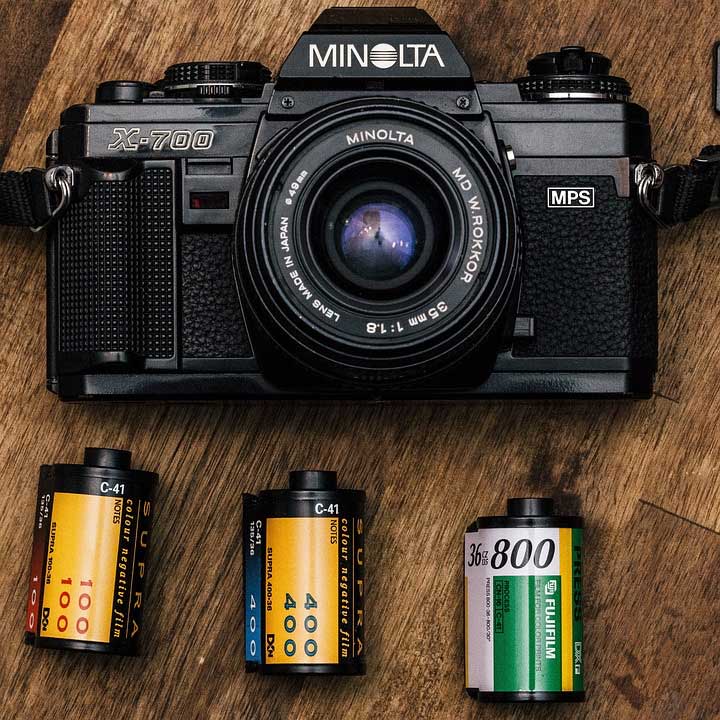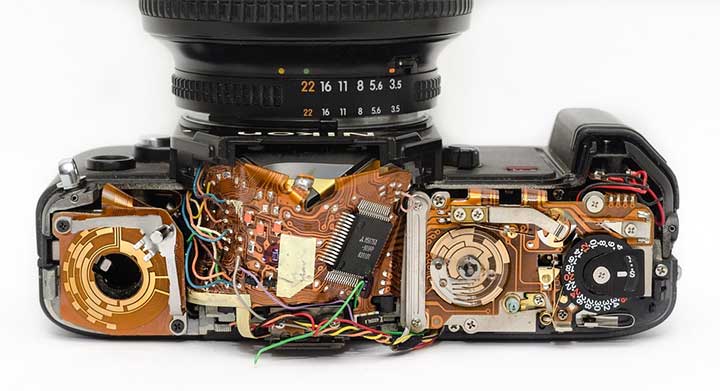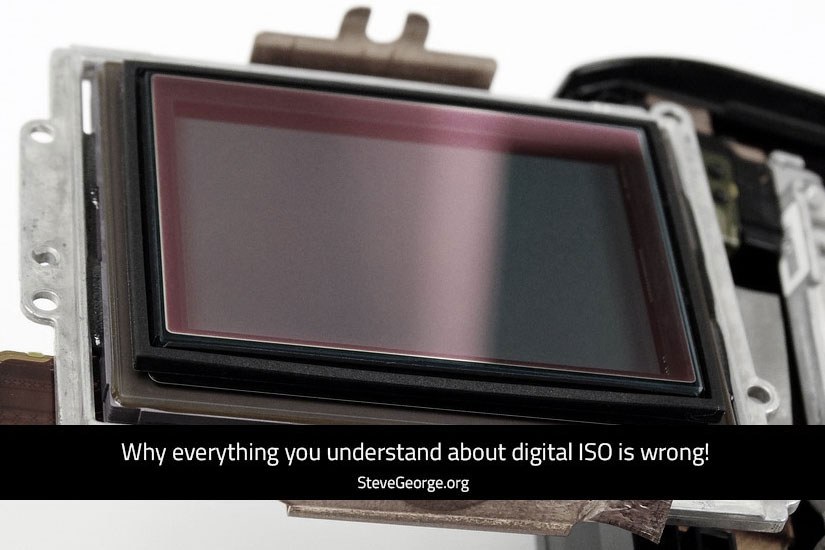Wow! That’s a big statement. But, although the common explanation of digital ISO is easy to understand, it’s unfortunately incorrect.
Isn’t digital ISO the same as film ISO?
The difficulty is that it’s easy to explain digital ISO, in the same way ISO worked on film. Even though it’s completely different in digital.
In the days of film cameras, you purchased a film for your camera that had a set ISO. And you would adjust your exposure by changing the aperture size and the shutter speed.

If you were going to be making photographs in lighting that wasn’t the best, you could choose a film with a higher ISO.
The ISO rating was based on the size of the light-collecting grains of silver nitrate used in the film’s manufacture.
The bigger the silver nitrate crystals were, the higher the ISO and the more light they could capture. But, using a film with bigger crystals meant that those crystals would show up on the resultant photograph. This was called ‘grain’
So, photographers would choose their film grade, based on the surroundings of the images they were trying to get.
This is where the sensitivity argument comes from. Because digital ‘noise’ can look similar to the old analogue grain.
Digital ISO noise is different
Digital camera sensors record exactly what’s visible through the lens. Changing the ISO doesn’t increase the sensor’s sensitivity to light.
When you Increase the digital ISO, the camera simply takes the data that’s been recorded and ‘amplifies’ it to brighten the image.
Each step increase in digital ISO, doubles the amplification of the collected light data.
So, how does that introduce noise?
I heard an analogy a while back, that explains it in a way that’s pretty easy to understand.
Recording light data (taking the photograph), is done in the same way that you would record sound data (recording from a microphone).
They’re both electronic recording mediums and they record in (basically) the same way.
Imagine you’re talking on stage and you’re recording the event for people who couldn’t attend.
Now, imagine you’ve been asked a question by a member of the audience at the back of the room and you can hear them, so you answer.
Once the event has finished, you listen the the recording and find you can’t hear the questioner.
They were too far away from the microphone, so the sound of their voice was very quiet on the recording.
To get around this problem, you increase the volume (or ISO in photography), which amplifies the recorded signal, so you can hear them.
The problem with this, is that yes, you can now hear the question being asked, but you can also hear all the annoying background noise as well.
This is exactly what happens when you increase the ISO in your digital camera. The sensor is recording exactly the same image as it would’ve with the lowest ISO.
But, now, as well as increasing the brightness of the image, you’ve also increased all the background noise that was always there, but it wasn’t noticeable before.
Background noise in audio shows as annoying hiss, ‘tinny’ speech and un-natural sound. Background noise in images shows as black dots, soft images and muted colours.

Conclusion
So, raising a digital camera’s ISO, does make the recorded image brighter. But, the image is brighter not because the sensor is more sensitive to light, but because the recorded data has been amplified.
When you use ISO to increase the visibility of the things you want to see in the image, you also increase all the background noise as well. There’s no way around it.
Every camera deals with noise differently, in software. My advice is to take several images in different lighting situations. Use different ISO settings, then decide how much noise you can live with.
Most dSLR and mirrorless cameras allow you to set a maximum useable ISO. So, once you’ve decided on your personal limit, enter it into the camera’s settings.
I hope this explanation has helped. But, if any of it’s unclear, or if you’ve got any questions, please let me know in the comments.


